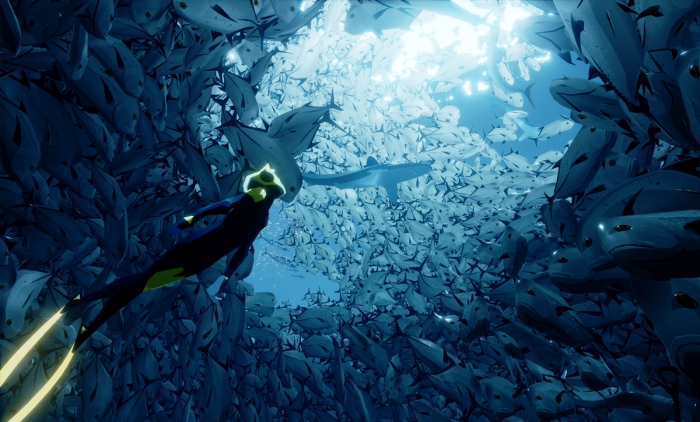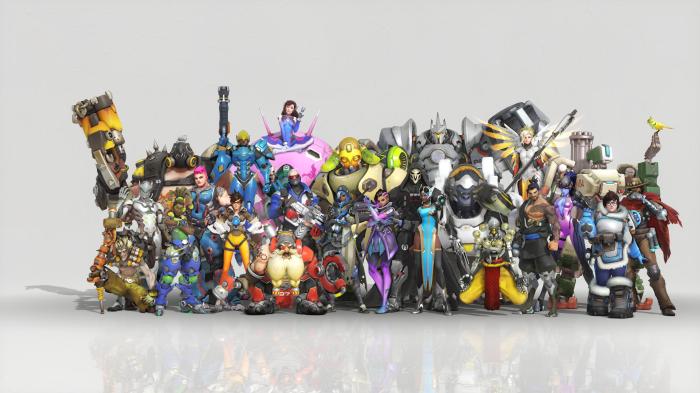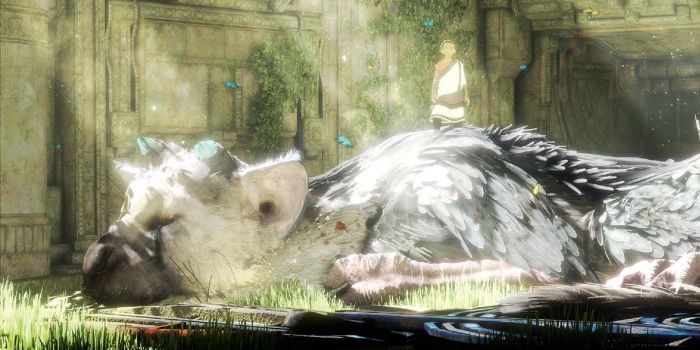Video games have a very different critical cycle compared to other forms of media. Movies, which can be consumed during a night out, tend to trigger a wide variety of opinions thereafter. Mostly lauded films will still earn bipolar, unpredictable opinions (that last Meryl Streep was good despite the reviews, or that Paul T Anderson flick was pretentious). Generally in film, I’ve found that it’s a bit harder to be sure about what someone will and won’t like. There’s usually a consensus, but like music there seems to be a need for some degree of personal overlap. In contrast, video games tend to generate a strong consensus of opinions on every facet, even for the large tent pole releases (which in film are instinctually downgraded and thus more variably reviewed). The standard for game review for many years was also a one-hundred-point-scale, which is sort of a ridiculous granularity on opinion, when viewed coming from cinema. Is this difference related to the immature critical apparatus or the nature of the media?
Before investigating this, it must be acknowledged that of course not everyone agrees all the time on games. Every opinion has dissenters, that’s the nature of mankind. However, I think the difference lies in the type of dissenting opinions, which for video games generally are focused on picking apart mechanical issues. The gamer often does not have an indescribable emotional reaction to video games, or at least they’re unable to articulate it beyond simply loss of interest. Instead, displeasure is generally expressed as a list of nitpicks on technical/control issues and is often accompanied by fantasy patch changes. Clearly this is related to the duality of the game, which is actually equal parts controlled narrative atmosphere and mechanical diversion in most cases (even Tetris, considered mechanical purity, has certain aesthetic choices including that diabolically catchy musical theme). Most popular thought on video games is relegated to this mechanical side, which makes or breaks the game. This strikes me as completely reasonable, as video games are also incredibly long. Laborious mechanics will torture the player over 20 hours, even when experienced concurrent with the best possible narrative. The result is the majority of opinion focuses on the more black and white business of mechanics, which consists of direct and simplified aggregated observations in contrast to narrative quibbles.
If we consider the current critical approach to be focused on mechanics, it may indicate a systemic answer to the question of how to compare radically different games and determine their relative value (this is a Best of List after all, remember??). However, it doesn’t seem necessarily meaningful to say that a mechanically tight game should sit astride the world. Though some people play only one game all year, your CS or DOTAs, and are satisfied, could you listen to one album or watch just one movie endlessly all year? Obscuring the issue further, a title played in January can be drastically different from one played in June, now that patches, early access, and delayed content delivery (DLC) are commonplace. Something is amiss. It would be no more productive to simply ignore the mechanical aspect of gaming and just use the critical tools from narrative to approach video games. Evaluating video games with the critical tools of film or literature tends to quickly reveal deficiencies (for this aspect) in comparison to its older brothers. Games are usually too long to tell narratives without holes, and games which are specifically engineered to be interesting in this ludonarrative context (many of which emerge from a passionate but very lo-fi indie game making scene) are almost always tedious to play. A pure focus on narrative dismisses the essential mechanical component. It is difficult to describe a good critical approach even before considering pavlovian loops and addiction patterning. Is a game that is so insistent of your attention that you never stop playing it really good, or just scary?
While there’s no perfect answer, it seems like games have a core duality replete with the imitation of living, which is not as ably captured by other media and is therefore not as easily criticized. To fully appreciate the merits of game, we must consider both narrative and mechanical aspects as equally important, and not necessarily in service of each other (the mistake of the ludonarrative dissonance movement). The greatest games create a synergy between these elements, a bubble of almost haptic immersion and emotional involvement in the fake reality. I think that description of this relationship, this imitation of life, will be necessary to create the new tools for critical appraisal of video games. Let’s take a spin, shall we?
The Best Games of 2016

Best Hero’s Journey 2016: Abzu
Most narratives are of the archetypal
hero’s journey, in which someone leaves relative safety due to a
problem, experiences catharsis, and then solves the problem. It’s the
default arch to bolt things onto, particularly in video games with their
big cliche set pieces and omnipresent final bosses. Abzu, a spiritual
water-based successor to Journey, presents a stripped down version of
the trope, taking you on a relatively brief and linear swim through
ancient underwater ruins. Abzu is primarily about exploration, with much
time spent on the observation of very pretty cel-shaded renditions of
copious aquatic flora and fauna. The “problem” is most directly
represented as the lack of flora and fauna to look at, which functions
as both a simple gameplay indicator (rocks are boring and life is cool)
and an obvious metaphor to mankind’s environmental maleficence,
suggesting the likely outcome of our persistent pollution and over
farming of oceanic resources. The player instinctively rejects the void
of life and seeks to fill it. Abzu presents this important mechanic so
subtly though that it creates great elegance in the flow of the game.
There’s no tutorializing/formalizing, as exploration of the silent
environment is itself the gameplay. When we finally reach the hero’s
catharsis, after learning some world history and understanding the
relationships of the objects therein a bit better, it is shown to us in
Abzu as emotional change. The avatar does not gain new equipment,
skills, or secrets. However, through the central mechanic of painting
life back into the void, the internal catharsis in Abzu is externalized
in joyous scenes of ebullient plenty, a fireworks celebration unmatched
by any other hero’s journey this year.

Best Emergent World 2016: Overwatch
Most game mechanics and narratives are clumsy, even forty years after the inception of the field. The developers like to sit next to you, telling you about every cool interaction so you don’t miss it, hinting at plot twists hours early, and jerking away control of the camera before big shake-ups. This over-eagerness serves a purpose, ensuring the production dollars are seen up on the screen, but creates an oversteered experience that diminishes player agency in the world. Overwatch, the slick as shit team shooter from Blizzard, is a rare game to take the opposite approach by loading the world with details and interactions and then not bothering to tell you any of it. Story building comes from stray comments, buried menu text, and online snippets. The stakes are often unclear, doubly so in the typical multiplayer matches which sees the teams scrambled nonsensically. Yet still the care and thought bleeds through. Blizzard clearly took a long time to get feel right for each character, and the result is a dynamic cast that you live in as you play, acquiring their personality along with their talents. This, is emergent gameplay in an unusual context for games, filtering to us in unexpected ways rather than the usual method of a carefully constructed jenga tower placed near our path, or the dubious journal entries dropped under spotlights. Overwatch is remarkable because it feels like a window rather than a contained .exe package, a collection of stories from abroad that unravel through gameplay rather than cutscene.

Best Philosophical Whimsy 2016: The Witness
One aspect of the fusion of narrative and mechanics might be best described as mood; the emotional reaction to the synesthesia of unique game experiences. Careful moderation of mood can create a powerful effect, one that can lodge Myst’s model ship and Silent Hill’s fog in your mind long after the particulars of their archaic narratives and mechanics have faded. The Witness finds us returning to another lost island, a decaying construct without much context but laden with puzzle driven purpose, an extrinsic method for solving the mystery of the unknown. The stage is adorned with small recordings of readings of actual quotes, from physicists, philosophers, and astronauts, which explain nothing about the islands but infuse the mood with bemused melancholy. The Witness uses setting and shared gamer history to triumphantly transform its logic puzzle mechanics from the pages of a supermarket paperback into the stepping stones of a unique journey. Lines and dots will fade but the Witness will stick around.

Best Innovation 2016: The Last Guardian
The largest division in the gaming world is the relatively benign separation between single and multiplayer games. Since the earliest days, games have either been personal experiences like Adventure, or have catered to the ping Pong multiplayer enthusiast. It may seem like tautology to suggest these two types of games are different, but this divide is much deeper than it first appears, demarcating a huge psychological shift between types of play. Indeed, most single player games basically don’t work when adding another player. Hacks which still tell single player stories for two people (think co-op) basically work by twinning the experience, combining the player agency back into a single unit, and games of this type remain rare. Meanwhile, multiplayer games have always had a pervasive psychological hold on the world. The oldest and the newest, most popular games (Chess, Dota) are defined by competition, free from much crafted narrative direction. In multiplayer games, you must reckon directly with the Other, an independent autonomy to yourself, which creates varied play time by reacting unpredictably, but more importantly also creates an opportunity for recognition and acknowledgment. Afterall, most of these types of games have ladders, ranks, awards. Single player games are unable to offer this same social power struggle.
And so we come to The Last Guardian,
the latest in a trilogy of moody, vaguely Aztecian temple runs/creature
features which specialize in narrative mythology. Its creators at Team
Ico have been working on this particular game for nearly a decade, but
upon finally seeing their work one must realize that they were not
polishing door knobs or hunting for set pieces. The delay comes from
trying to create something new, something impactful and dynamic that the
technology couldn’t yet support. After a long incubation, this beast is
literally born, the gigantic Trico. Non-player characters are not a new
invention, some are even quite dynamic such as Half Life 2’s and The
Last of Us’ faithful female charges. However these characters lacked any
autonomy outside of cutscenes, and their ilk has always been at best
Stepford wives and husbands, accompanying the player’s on their personal
journey. Trico defies the old guard by creating the illusion of
independent existence to the player. Trico is a beast you have to learn
about, which reacts unexpectedly to the world and only sometimes listens
to you. On top of that, most of the autonomy belongs to Trico; your
tiny defenseless child can barely reach 5 foot high ledges and must
cooperate with Trico for nearly every step out of the dungeon you were
meant to die in. It certainly doesn’t seem like an illusion when Trico
just straight up ignores you and pokes around somewhere else at his
leisure while you struggle for his attention. The Last Guardian creates a
separate entity to the player, something beyond a tool, and has kick
started a new type of single player struggle evocative of multiplayer,
in which recognition must be earned. Even with just a passing mention of
the confident minimalistic storytelling, the Last Guardian is clearly
an exciting new step.

Champion Competency 2016: Uncharted 4
Sometimes, a game is significant for
its attention to craft. Although the mechano-narrative functions of the
Uncharted games are conservatively designed, they tend to have superb
pacing and feel. Your time with Drake is rarely surprising; he drolly
solves most problems with violence (Drake assuredly rivals the KGB for
the number of eastern Europeans executed by a bullet in the head), and
most cliffs have the exact number of handholds you need to clamber up.
But while you’re scurrying around you might see an enemy and pull your
gun out while hanging from one hand, aiming with the other while you
sway just so in a cool breeze rippling through the forest. It’s a moment
in a sea of moments, carefully crafted but dynamically strung together,
keeping you glued to the Indiana Jones-style flow for so long you won’t
notice the hours melt away. Assured mechanical craft draws the player
into the avatar of Drake, such that the world is experienced directly
and subjectively. Narratively, the game is thematically strong, quietly
dramatic and understated in between explosions, following an aging thief
pondering how long his luck can hold out. Even if the action movie
logic doesn’t make sense in the real world, the visceral experience of
playing Drake’s subconscious instinct for movement ensures that the
narrative is considered an internally consistent experience. This type
of victory over dissonance is unique to the medium, which build the
illusion with the player narratively and mechanistically. As a slick
blending of the forms, Uncharted 4 is another beautiful pop melody,
differentiating itself from its predecessors with the suggestion that
summer might be coming to an end at last.

What Needs Burn Inside? Best Game of 2016 : Inside
What compels us to finish games? Generally we enjoy the gameplay, but if there was a “fun” level which we then saw all of in 10 minutes, it would not earn much more of our time. Instead, we are often compelled to decipher the mystery of the game, either by unraveling the narrative or by exploring most of the level architecture. Dissonantly, the main character is often uninterested in these goals. Mario would probably be dejected we risked his life and limb for some extra coins, and Drake is not trying to reach a denouement, he’s trying to complete his personal goals for survival and wealth.
Inside, a thinker from the Limbo lads, derives enormous power from combining the wants of the player and the character. You play a red sweat-shirted boy breaking into a compound at great personal peril and with almost no context. Both of you are compelled to keep pushing right, through growing dystopian terror. Both want to see what is Inside this compound, even if the source of the motivation is different between the two of you. As the player controls the boy, the levels control the player, funneling you both towards an inescapable destiny. Puzzles are obstacles in the purest sense, accidents are fatalistic envoys, and deaths are possible imagined alternate fail states. The fused motivations of the player and avatar create a closed loop, forming an absolutely enveloping experience. The result carries you through to one of the most surprising endings of a game in years, a shocking catharsis that could only come from games, and only from one of the best.
Originally published on Synthetic Error December 31, 2017
Comments
Post a Comment